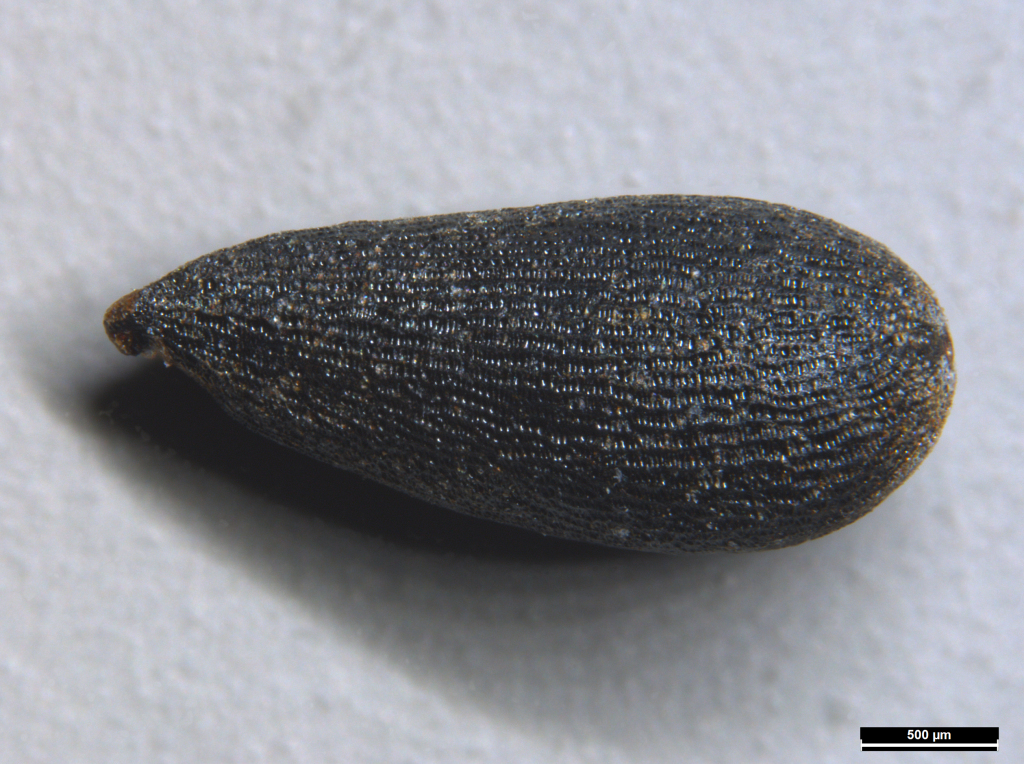Pimelea curviflora subsp. gracilis
(R.Br.) ThrelfallSlender shrubs, mostly to 50–150 cm high, usually single stemmed from base and probably regenerating from seed rather than resprouting after fire. Leaves ovate to obovate, mostly 5–20 mm long, 2–6 mm wide, usually discolorous, glabrous or sparsely sericeous above, with loosely appressed to spreading hairs beneath. Flowers mostly 5–20 per inflorescence; perianth corolla tube 7–10 mm long, hairs on floral tube appressed, to c. 1.2 mm long, sepals 2–3.5 mm long. Seed narrow-ovoid, finely textured with minute, more-or-less isodiametric alveolae arranged in narrow longitudinal lines. Flowers mostly Oct.–Feb.
GleP, VVP, VRiv, OtP, Gold, CVU, GGr, NIS, EGL, EGU, HSF, HNF, MonT. SA, Qld, NSW, Tas. Usually in moist forest and/or streamside areas of the east, often somewhat elevated (e.g. Omeo area) and disjunctly in the west (e.g. Grampians, Portland). .
Pimelea curviflora var. gracilis and P. curviflora var. sericea were combined under the name Pimelea curviflora var. 1 in vol 3, Flora of Victoria (1996) and earlier versions of VicFlora, but further investigation suggests that the two varieties (now treated as subspecies), in the vast majority of cases, are readily distinguished (Walsh & Schulz 2020).
 Spinning
SpinningWalsh, N.G.; Schulz, E.M. (2020). Notes on Pimelea curviflora and P. micrantha (Thymelaeaceae, Sect. Epallage) and recognition of two new subspecies of P. curviflora. Muelleria 38: 111–123.


